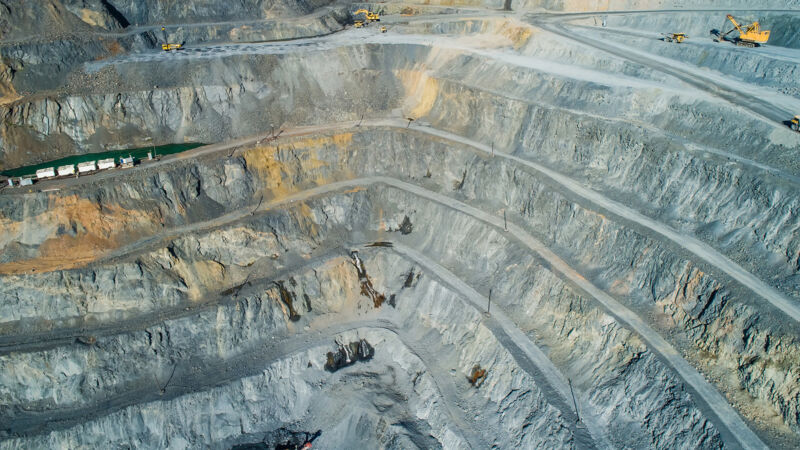There is unquestionably strong global interest in pursuing low-carbon and net-zero emissions options for everything from home energy to transportation. This will require the development of new and more efficient generation technologies, as well as greater amounts of energy storage capacity. This, in turn, will require vast amounts of the raw materials required to produce the large quantity of batteries needed to serve a greener energy grid
This past June, the government of Western Australia (WA) launched a new effort to increase the appeal of the down-under region as a place for investors around the world to turn to for their investments in batteries and critical minerals. WA already supplies half of the world’s lithium, and it is a major exporter of other key minerals such as cobalt, nickel and manganese.
Investment in WA mining has been strong for many years, with more than $9 billion invested in mining and processing operations since the middle of the past decade. But there are signs that the pace of investment and development may be quickening.
Public stock offerings show focus on a green future
Recently, a number of metals and mining initial public offering (IPO) prospectuses have been circulating in Australia that promote their local companies’ capital raisings by linking them in some way to the reduction in the carbon footprint and emissions, according to Thomson Reuters research.
Fifty-five IPOs were announced for admission to the Australian Stock Exchange (ASX) in the first six months of this year. Of these, 41 IPOs were among the Metals & Mining global industry classification standard –a surprisingly large majority. What’s more, all but one prospectus listed “exploration” as the company’s primary focus, highlighting the demand being generated by growing global demand for the types of resources produced by the WA mines.
To further strengthen the tie to green energy, 21 of 41 prospectuses mention, either directly or indirectly, a link between the metals and minerals for which they’re exploring and a transition to clean energy and net-zero emissions. For example, Koba Resources Ltd. offered an extensive two-page letter with details on the cobalt industry, consumption forecasts, and its use in batteries including in electric vehicles, all while referring to the Biden administration’s Clean Energy Plan.
Summit Minerals Ltd. states it is “exploring for battery minerals,” suggesting that it, too, is linked to the energy transition.
Other offerings were less specific but still contained indications of the purpose of their exploration, such as two companies that referred to energy transition less explicitly within their prospectuses, or another company that mentioned they would aim to be a “carbon-neutral explorer.” Even for those companies that are not explicitly tying their offerings to purposeful exploration for green energy technology, the influence and importance of environmental concerns is apparent.
M&A’s role in future green development
The Australian mergers & acquisitions (M&A) market also shows indications of an increasing focus on green energy transition among industries on the continent, albeit to a lesser extent than the IPO market. From July 1, 2021 through June 30, 2022 (the Australian fiscal year), there were 74 mergers or takeovers announced, with 17 of the target companies falling within the Metals & Mining classification.
Among these 17 transactions, only two mergers contained terms relating to energy transition, clean energy or net-zero emissions. However, these terms were contained either in the press release, the Chair’s Letter of the Bidder Statements or the merger scheme booklets, which indicates that these terms were used as one of the enticements to persuade shareholders to approve the merger.
For example, in an offer in which Kirkland Lake Gold Ltd. was targeted for merger by Agnico Eagle Mines Ltd., one of Agnico’s strategic rationales given to Kirkland shareholders to accept the merger was that “the combined entity will be a leader in energy performance and greenhouse gas emissions intensity.” Agnico also made a commitment that the post-merger company would be “net zero by 2050.”
The other merger involved IGO Nickel Holdings Pty Ltd. (owned by IGO Ltd.), which was seeking to acquire Western Areas Ltd. (WSA). WSA shareholders were told of IGO’s focus on “discovering, developing, and delivering products critical to clean energy” along with the advancement of the “global transition to decarbonization.” They were also told that the merger would assist IGO’s progress toward becoming a global supplier of metals to enable a clean energy future.
The materials of the future
So-called critical minerals of the sort being sought by many of the companies undertaking recent IPOs will be crucial to a range of different sectors. Australia’s Department of Industry, Science and Resources has noted the International Energy Agency’s prediction of increased demand of these minerals for electric vehicles and battery storage.
In fact, nine of the world’s top 50 mineral projects are based in WA, including six of the world’s 10 most valuable mining projects, according to the Australian government. Given the pace of business transactions focused around WA mining – particularly IPOs for new exploration – it’s likely that this trend will only intensify as critical minerals demand grows further in the coming years.





